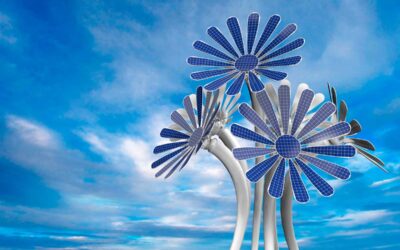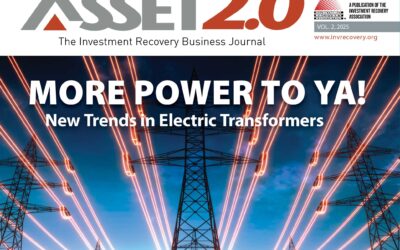The practice of investment recovery involves practical cost-saving measures that provide significant value to their organizations. IR also embraces a higher-level purpose of sustainability and stewardship of resources that benefit society; however, beyond the specialized focus of investment recovery for individual companies, perhaps the highest approach in seeking to redefine the global production and consumption of goods and services is the concept of the circular economy.
There is a growing effort to change the increasingly outdated linear “take, make, dispose” model, which relies on large quantities of easily accessible resources and energy. This approach to manufacturing is increasingly unfit for the reality of today’s economy and tomorrow’s scarcity. Simply working toward improved efficiency—a reduction of resources and fossil energy consumed per unit of manufacturing output—will not alter the finite nature of their stocks but can only delay the inevitable. A change of the entire operating system seems necessary, and because investment recovery practitioners should be leading examples of this practice, you can take a leading role in moving your organization toward the principle of the circular economy.
The circular economy refers to an industrial economy that is restorative by intention; aims to rely on renewable energy; minimizes, tracks and hopefully eliminates the use of toxic chemicals; and eradicates waste through careful design. The term goes beyond the mechanics of production and consumption of goods and services in the areas that it seeks to redefine.
Moving away from the linear model.
It has become more apparent that the older, linear “take, make, dispose” industrial processes, and the lifestyles that feed on them, deplete finite reserves to create products that end up in landfills or in incinerators. This realization triggered the thought process of a few scientists and thinkers, including Walter R. Stahel, an architect, economist, and founding father of industrial sustainability. Credited with having coining the expression“ cradle to cradle” (in contrast with “cradle to grave,” illustrating our “resource to waste” way of functioning) in the late 1970s, Stahel worked on developing a “closed loop” approach to production processes.
Creating the circular framework.
In their 1976 research report to the European Commission, “The Potential for Substituting Manpower for Energy,” Walter Stahel and Genevieve Reday sketched the vision of an economy in loops (or circular economy) and its impact on job creation, economic competitiveness, resource savings, and waste prevention.
Stahel’s approach considers product-life extension, long-life goods, reconditioning activities, and waste prevention. In broader terms, the circular approach is a framework that takes insights from living systems. It considers that our systems should work like organisms, processing nutrients that can be fed back into the cycle—whether biological or technical—hence the “closed loop” or “regenerative” terms usually associated with it.
Rethink and redesign.
The “Circle Economy” envisions a society that mimics the organization of living ecosystems. In nature, there is no waste, and every organism takes from and gives to the ecosystem. By mimicking nature, the focus is on optimizing entire systems instead of individual components. The result is the creation of closed-loop industrial processes. The challenge to get there is to fundamentally rethink and redesign the way we consume, produce, finance, and govern. By addressing the complex interactions that exist where resources, materials, and energy intersect, the circle economy can drive restoration and regeneration of industrial systems.
Cradle to cradle.
Created by German chemist Michael Braungart and American architect Bill McDonough, the cradleto- cradle design model considers that all material involved in industrial and commercial processes can be seen as nutrients, of which there are two main categories: technical and biological. Technical nutrients should include only materials that do not have a negative impact on the environment (so nonharmful synthetic ones are accepted), while biological nutrients are organic and can be returned to the soil without specific treatment to decompose and eventually become food for the ecosystem. What we need are “completely healthful products that are either returned to the soil or flow back to industry forever,” say McDonough and Braungart.
Consumption and use.
The circular economy draws a sharp distinction between consumption and use of materials: circular economy advocates the need for a “functional service” model in which manufacturers or retailers increasingly retain the ownership of their products and, where possible, act as service providers—selling the use of products, not their one-way consumption. This shift has direct implications for the development of efficient and effective take-back systems and the proliferation of product and business model design practices that generate more durable products, facilitate disassembly and refurbishment, and, where appropriate, consider product/service shifts.
As circular economy pioneer Walter Stahel explains, “The linear model turned services into products that can be sold, but this throughput approach is a wasteful one. In the past, reuse and service-life extension were often strategies in situations of scarcity or poverty and led to products of inferior quality. Today, they are signs of good resource husbandry and smart management.”
The circular economy is based on a few simple principles:
- Design out waste. Waste does not exist when the biological and technical components (or “materials”) of a product are designed by intention to fit within a biological or technical materials cycle, designed for disassembly and re-purposing. The biological materials are non-toxic and can be simply composted. Technical materials—polymers, alloys, and other man-made materials—are designed to be used again with minimal energy and highest-quality retention (whereas recycling as commonly understood results in a reduction in quality and feeds back into the process as a crude feedstock).
- Build resilience through diversity. Modularity, versatility, and adaptivity are prized features that need to be prioritized in an uncertain and fastevolving world. Diverse systems with many connections and scales are more resilient in the face of external shocks than systems built simply for efficiency.
- Work toward using energy from renewable sources. Systems should ultimately aim to run on renewable energy—enabled by the reduced threshold energy levels required by a restorative, circular economy.
- Think in “systems.” The ability to understand how parts influence one another within a whole, and the relationship of the whole to the parts, is crucial. Elements are considered in relation to their environmental and social contexts. Where does investment recovery fit within the circular economy? Simply looking at the right side of the circular economy diagram
 it’s clear that the core capabilities of IR practitioners (recycling, refurbishing/ remanufacturing, and reuse/redistribution or redeployment) are all key elements of a circular economy approach to manufacturing. Large enterprises in all sectors of the global economy will continue to work toward reducing their carbon footprint and improving their sustainability efforts. Investment recovery should be at the table in these discussions, providing insight, support, and experience in this growing effort.
it’s clear that the core capabilities of IR practitioners (recycling, refurbishing/ remanufacturing, and reuse/redistribution or redeployment) are all key elements of a circular economy approach to manufacturing. Large enterprises in all sectors of the global economy will continue to work toward reducing their carbon footprint and improving their sustainability efforts. Investment recovery should be at the table in these discussions, providing insight, support, and experience in this growing effort.
Sources: Ellen MacArthur Foundation, McKinsey Quarterly, Circle-Economy.com, Wikipedia



